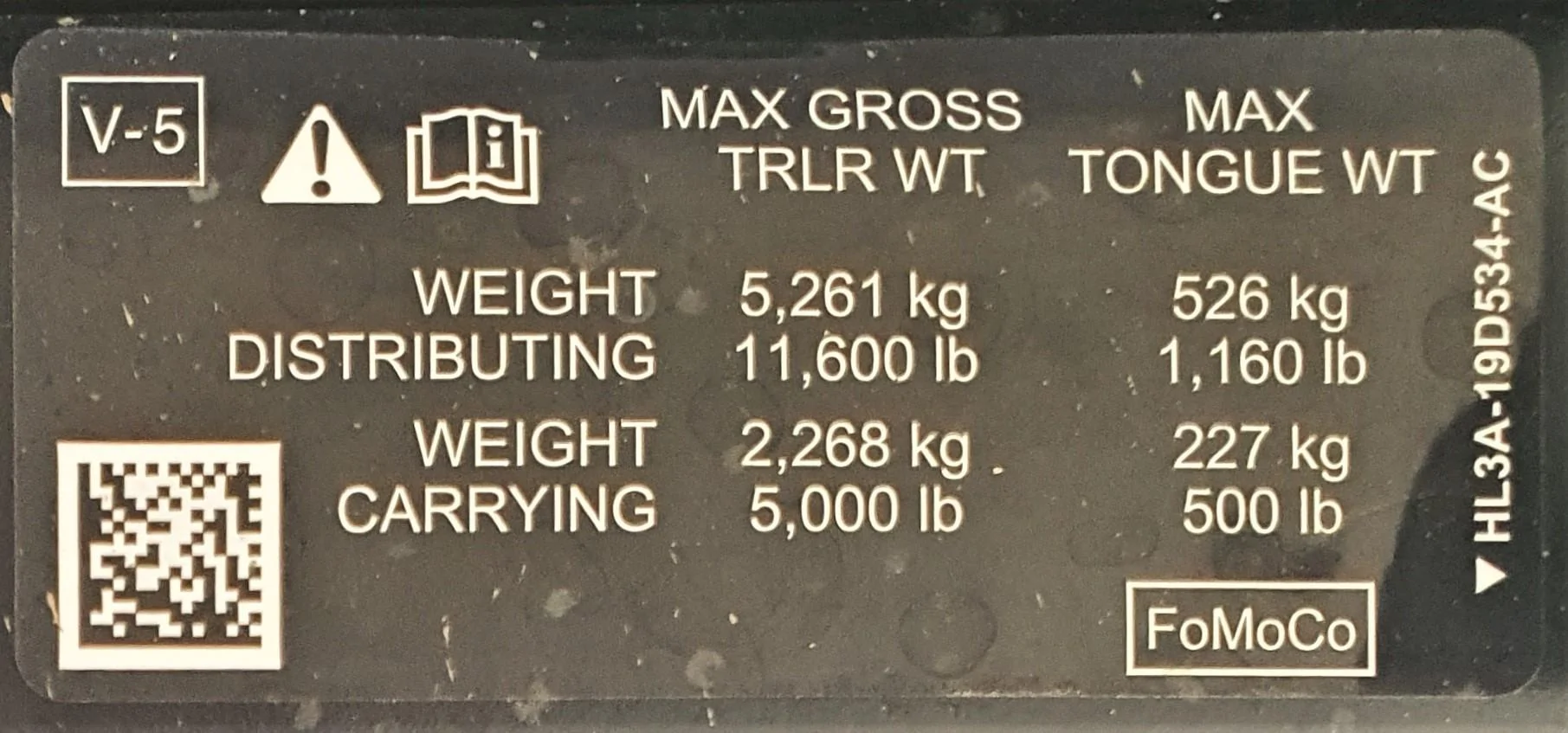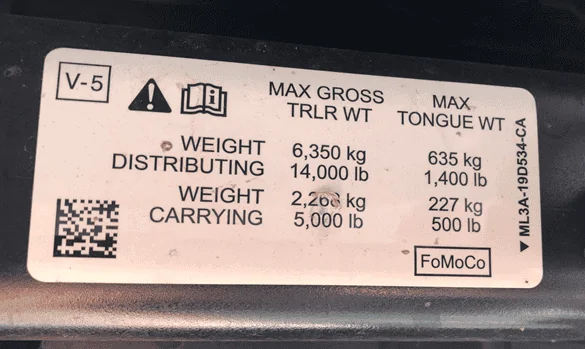BLoflin
Well-known member
- First Name
- Brooks
- Joined
- Feb 20, 2021
- Threads
- 1
- Messages
- 264
- Reaction score
- 108
- Location
- Austin, TX
- Vehicles
- 2022 KR PB 6.5'
- Occupation
- retired
Not sure I follow, or just didn't catch if it was sarcasm...Right, so they just let us interpret it the way we want ?
It's a Lariat, 5.0L, 5.5 (standard bed), FX4, Tow Technology Package (17T)
For your truck then your Max Payload is on your door sticker. Your GVWR is on your other door sticker. Your Max Towing is 10,400lbs. And your GCWR is 15,800lbs. This assumes you have the "normal" 3.73 rear end (Axle Ratio).
This also assumes you have a WDH for Max Towing.
To utilize your Max Towing of 10,400lbs this assume your ACTUAL Curb Weight is 5400lbs (or less).
Your AS BUILT Curb Weight is your GVWR (from sticker) - Payload (from Sticker). Then your actual Curb Weight is As Built Curb Weight plus anything you've added to the truck (tonneau cover, kayak racks, tool chest, etc) plus Driver and Passengers. If this number is over 5400lbs then your Max Towing goes down accordingly.
Now comes the "interpret"ing part, well at least the understand Marketing vs Specs part.
Towing a flat bed loaded with up to 10,400lbs of steel (or concrete, etc) at 15 mph across your farm/business is different than trying to tow an RV at highway speeds. Large RV is very affected by sway (usually from wind gusts or changing lanes fast), therefore you need to have your tongue weight correct (and anti-sway WDH). Your Tongue weight (at least 10%) takes away from your allowable Payload. If you were really trying to tow RV at 10,400 that would mean a tongue weight of 1040, which coupled with your other payload (drivers, passengers, gear in back seat/bed) might violate your Payload rating. So you would have to back off your Tow weight (hence the adjectives MAX in a lot of the specs).
Net is, it is a fair amount of math (but simple math).
Sponsored



